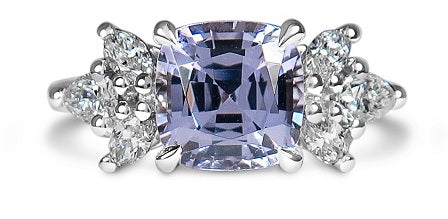How to Clean and Maintain Your Jewellery
Showing your jewels the respect of proper care and maintenance will ensure every piece stays looking beautiful and retains its value for generations to come.

How to Clean Your Jewellery
Staying on top of regular cleanings is the key to keeping your jewels looking like the first day you saw them. If possible, try to give items you wear on a daily basis some weekly TLC. To keep your favourites sparkling, simply fill a small bowl with warm water and a couple drops of gentle soap, and use a soft, baby toothbrush to carefully clean each piece. Start by scrubbing the settings and any earring backs with gentle circular motions, including the sides and back, where the most debris tends to collect. Be sure to work over a soft pad or cloth (instead of the sink!) which will offer up protection while you work. Carefully rinse each item with soap-free water and use a soft cloth to pat them dry.
Always avoid submerging strands of pearls or chain necklaces and bracelets in water, and instead, gently polish them with a lint-free jewellery cloth after each wear to rid them of dust, debris and perspiration. An anti-tarnish wipe will also help keep sterling silver pieces looking their best between uses. If you're ever in doubt about how to clean one of your jewellery pieces, please contact us and we'll be happy to to offer a consultation on the best approach.
How to Properly Wear and Store Your Jewellery
Even though diamonds and the metals that hold them seem indestructible, it's important to still be mindful of their precious nature when going about your day-to-day activities. Diamonds can still suffer nicks, chips, burns and other damage, while metals can easily be scratched, misshapen and even erroded by certain chemicals. Always remove your jewellery during activities that your jewels would rather not be a part of, including cleaning, swimming and visits to the gym.
Keeping your pieces tucked away in a jewellery box might seem like a no-brainer, but storing them appropriately is a must if you want to keep your diamonds, pearls and coloured gemstones and their settings, scratch-free and sparkling long-term. Keep in mind that every gem has a different hardness. While diamonds are well-known to be the hardest, many other gemstones, such as peridots, amethysts, tanzanites, zircons, opals and pearls are significantly softer and can be easily damaged just by rubbing up against another stone. In fact, any gem can scratch another which is only one grade below it, which is why keeping your jewellery well-separated either with individual pouches, trays or other dividers is key. The other plus? Having everything you have clean and well laid out will make it much easier to decide which pieces to wear at a moment's notice, and you'll be more likely to wear your jewellery more regularly, in general.
Some gemstones, such as opals, pearls and emeralds (which are often treated with cedarwood oil), contain quite a bit of moisture. To keep them in their best condition, consider keeping them in silk pouches, especially for travel or when you only wear them on special occasions. The pouches will not only ensure these softer gems are well-protected, but using silk rather than a synthetic material or even cotton can prevent them from losing moisture, which can also cause “crazing” (small cracks) in opals and pearls. Remember to also avoid hanging your pearls, which can cause their cord to stretch. Do not keep them in plastic or other air-tight containers, such as a safe, as it can lead to dehydration. If you have enhancers for your pearl strands, earrings or other pieces, carefully remove them before storing.
Amethysts, citrines, kunzites, conch pearls and topaz are all examples of gems which can also be vulnerable to fading with too much UV exposure, so be mindful of keeping them protected from extreme sunlight both during wear and storage. Similarly, garnets, emeralds, iolites, opals, peridots, tanzanites and tourmalines can be vulnerable to extreme temperature changes, so exposure to severe hot or cold conditions should be avoided, especially when travelling.
When to Visit a Professional
One of the most special things about acquiring jewellery is that with proper care, it can be treasured for several generations or more. Regular professional attention will ensure your pieces go the distance. Penwarden Fine Jewellery is happy to offer complimentary in-store inspections and cleaning for all of our pieces.
Just like the gems they keep safe, precious metals, even when alloyed with other metals, have their own hardness rating and it's surprisingly lower than some of the most popular stones, including diamonds, sapphires, rubies, spinels and more. This means that many gems will naturally wear through their prongs, and other settings overtime. Regular cleanings are a great time to inspect your pieces and check for any scratches, loose settings, or clasps. For pieces you wear regularly, have them inspected once a year to double-check that the settings aren't in need of any maintenance.
Overtime, you may also notice wear on white gold and platinum designs, which are sometimes coated with rhodium for an extra-bright appearance. Professional buffing and occasional re-coating or polishing can keep your favourite pieces looking their best. Have pearl bracelets or necklaces you wear weekly re-strung annually, while those that are kept for special occasions can be re-strung every two to three years.

